On Encountering and Holding Reindeer in a Convivial North
The Benefits of the Cold. Stammler, F., Takakura, H. (eds.). Routledge
Chapters in Books, Reports and Conference Proceedings: Chapters (Peer-Reviewed)
Prof. David Anderson (Anthropology), Dr. Karen Milek (Archaeology), Dr. Loic Harrault (Archaeology), Prof. Lorna Dawson (James Hutton Institute), Dr. Ilse Kamerling (Geography and Environment), Ms. Julia Kremkova, Ms. Gabriella Domene-Lopez (Archaeology).
While some indigenous social-ecological systems in the Arctic have proven resilient in space and time, most are considered at risk due to climate warming and increasingly unpredictable and extreme weather conditions. There is therefore an urgent need to increase our understanding of their response capacities today and in the future by understanding how the nexus of feedbacks between humans, animals and the environment operated in the past.
The research for the HUMANOR Project is being conducted by a network of anthropologists, archaeologists, and environmental scientists from Finland, Sweden, Norway, the Russian Federation, and Scotland (see Project Partners for details). The research focusses on indigenous Sámi, Nenets, Evenki and Mongolian nomadic pastoralists at two timescales – the late Holocene (c. last 2000 years), and post-WWII – both of which have seen significant climatic changes as well as societal changes in terms of the transition from hunting to herding reindeer, changes in herding strategies, and the change from a collectivized to a post-collectivized society. The project aims to:
By improving our knowledge of climatic and non-climatic drivers affecting human-animal relations in northern indigenous social-ecological systems in the long- and short-term, we hope to understand the extent to which contemporary institutions governing indigenous land use in the study areas are facilitating or hindering long-term adaptation and resilience of indigenous reindeer herders.
Image: A Nenets summer camp, Yamal peninsula, northwest Siberia (© Karen Milek)
At the University of Aberdeen our role on the HUMANOR Project is to develop a detailed ethno-historical reconstruction of landscape use by Arctic pastoralists in northern Fennoscandia and northwestern Siberia from 2000 years ago to the present. Our research is pioneering a trans-disciplinary method that integrates:
The lipid biomarker analysis in particular involves substantial methodological development, and will further enhance the potential of geoarchaeology to contribute to activity area analyses.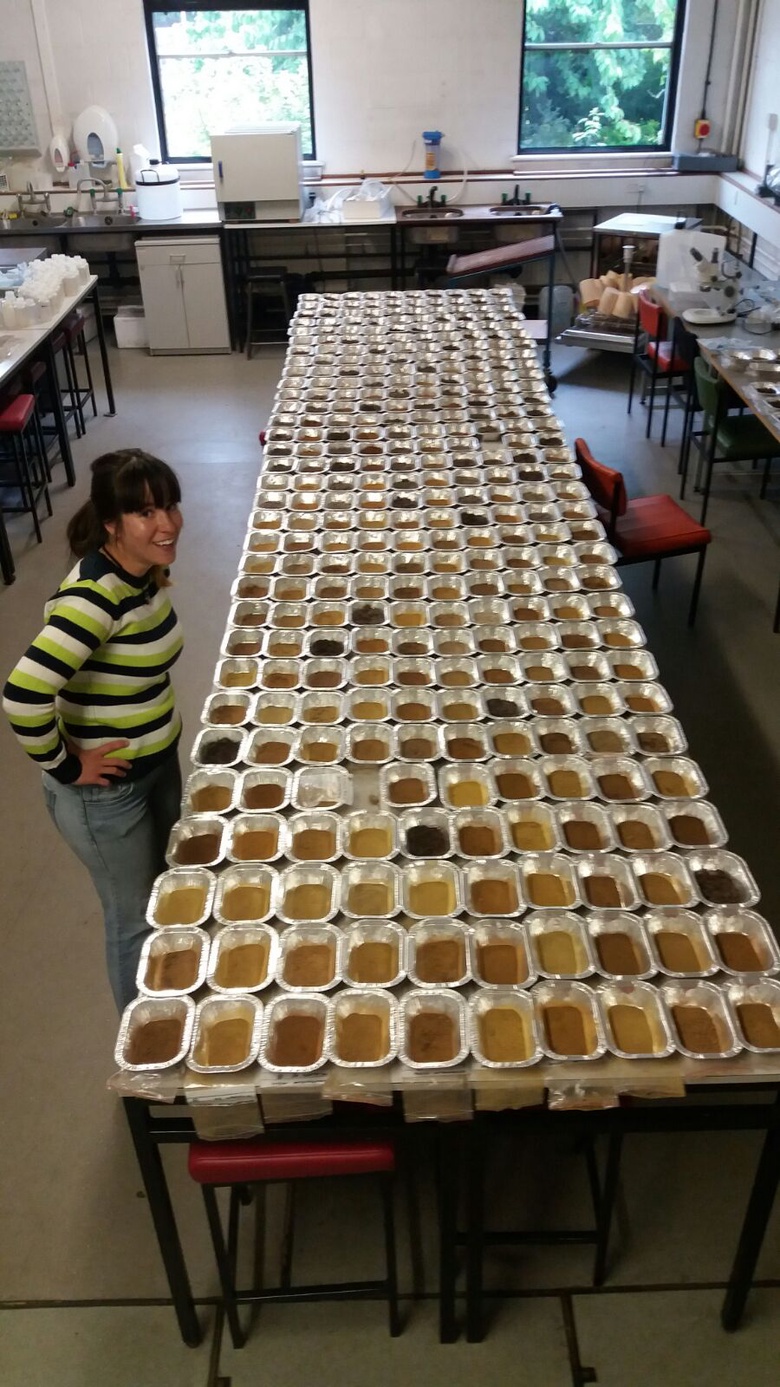
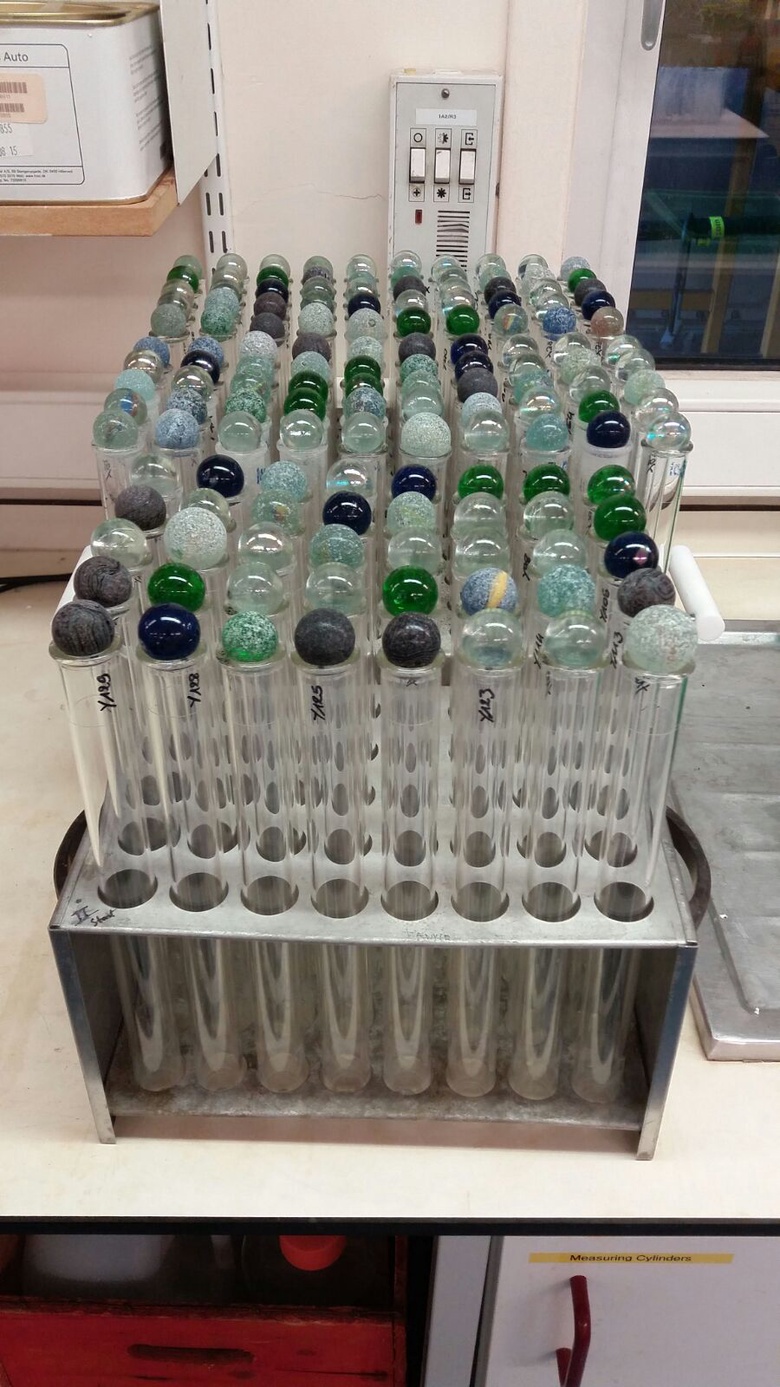
Images: (above, left) Geoarchaeology laboratory assistant Gabriella Domene-Lopez processing soil samples from Suollakavalda, northern Sweden. (above, right) Lipid biomarker analysis underway at the James Hutton Institute. (© Loïc Harrault)
Case Studies
So far we have conducted archaeological field work, collected soil and peat samples and reference samples of dung and plants at the following sites:
Yarte 6, Yamal Peninsula, Yamalo-Nenets Autonomous Okrug, Russian Federation
In the summer of 2015 we joined the Russian excavation team led by fellow HUMANOR member Dr. Andrei Plekhanov at Yarte 6, an 11th-12th century AD site situated in the middle of the Yamal peninsula, on a dry terrace above the floodplain of the Yuribei River. The site had previously been excavated (and nearby peat deposits sampled) in 2013 and in the 1990s, when it was made famous by its deep stratigraphy, excellent organic preservation (in permafrost), thousands of reindeer bones, and many hundreds of bone and wood artefacts.
While Andrei and his team excavated pit houses, fire features, c. 3000 more reindeer bones and artefacts that pointed towards reindeer processing and contact with more southern cultures, the Aberdeen team (Karen, David, Loïc, and Julia) conducted a magnetic susceptibility survey around the site to locate nearby campfires and extensively mapped and sampled the soils. These contained up to four buried soil horizons separated by aeolian sands and silts, making it possible to analyse four slices of time in the site’s history. Ongoing phosphate and lipid analysis is helping us reconstruct the site structure in its different phases of use, and to verify the presence of congregating reindeer herds – crucial to the interpretation that the site belonged to early reindeer herders.
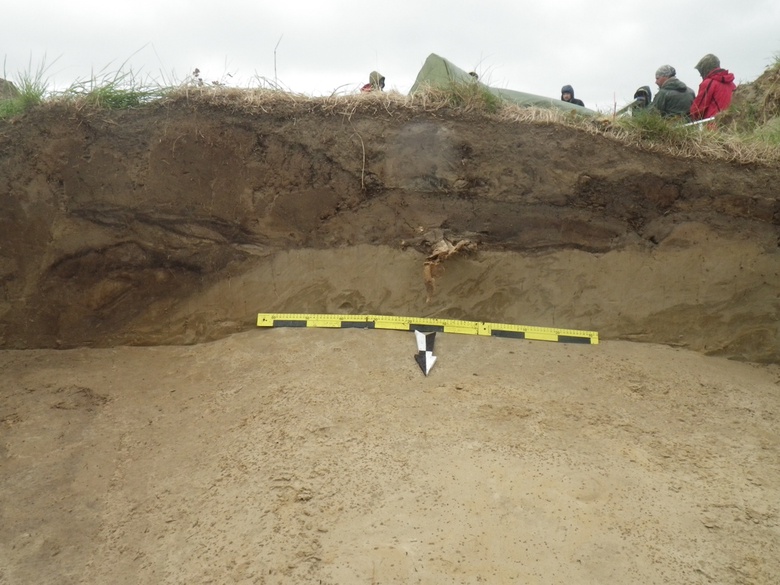
Image: Yarte 6 pit house under excavation in 2015 (© Karen Milek)
To place Yarte 6 in its wider landscape context we collected charcoal and pottery from two previously unidentified/unrecorded nearby sites, and visited the erosion scars that mark the other Yarte sites in the vicinity, collecting pottery and charcoal to help date them. We also visited current and recent Nenets campsites in the area and collected reference samples of reindeer faeces and tundra vegetation.
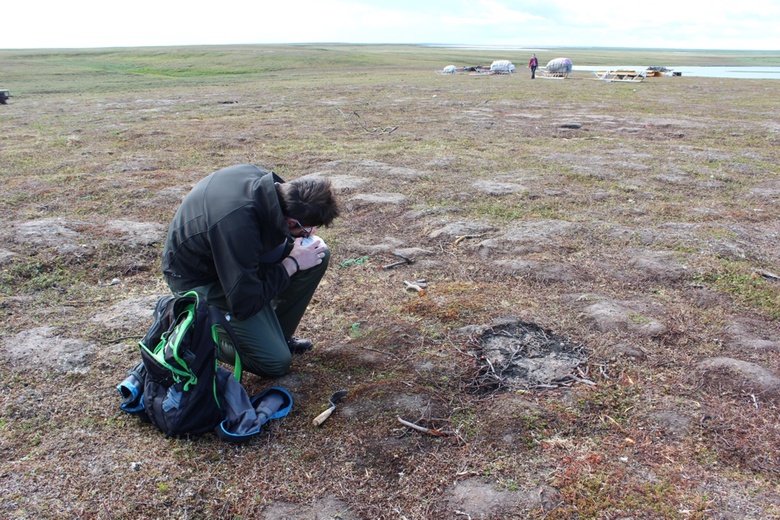
Image: Loïc Harrault collecting reindeer faeces and plant and lichen reference samples from a recently abandoned Nenets campsite. (© Julia Kremkova)
Suollagavallda, Norrbotten, northern Sweden
In the summer of 2016 we joined fellow HUMANOR member Kjell-Åke Aronsson and his colleague Jarl Henriksson, from Ájtte Swedish Mountain and Sámi Museum in Jokkmokk, at Suollagavallda (Suollakavalta in Swedish), a Sámi site high in the mountains of northwest Sweden, not far from the Norwegian border. The site consists of ten separate clusters of stone-lined hearths and ‘stalo’ (pit house) features, many of which had previously been studied by Inga-Maria Mulk in the 1980s and 90s, and dated to the 11th century AD. Peat sampling for pollen analysis by Kjell-Åke and HUMANOR palynologists Ilse Kamerling and Mari Kuoppama in 2013 had already shown at least two periods of occupation at Suollagavallda, one in the 11th century and one in the 14th century. However, there are numerous competing hypotheses about who used the site and how, and the degree to which this changed over time. Was it a Sámi hunting station, a milking site used by mountain Sámi reindeer herders, a trading station between the Norse on the Norwegian coast and mountain Sámi, or a shieling site where mountain Sámi tended sheep and goats during the summer on behalf of coastal Sámi?
In order to answer these questions, the Aberdeen team (David, Loïc, and Gabriella) visited six of the stalo clusters and investigated one of them in detail (G). A magnetic susceptibility survey was used to locate additional hearths, and the soils around the stalo buildings and heaths were extensively mapped and analysed in the field for their phosphate content in order to locate animal congregating areas. Ongoing loss-on-ignition, lipid biomarker analysis, and soil micromorphological analysis are helping us identify activity areas on the site, most importantly where animals were corralled/tied, and which species were present – crucial information for understanding human-animal relations and land-use during different periods of climatic stability and change.
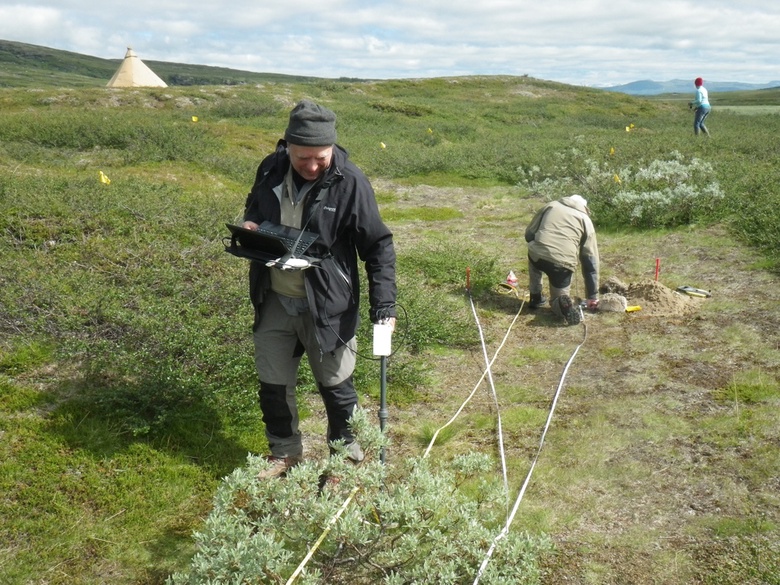
Images: (above, left) David Anderson undertaking a magnetic susceptibility field survey to locate new hearths. (above, right) Gabriella Domene-Lopez taking micromorphology samples from a thin cultural layer adjacent to a hearth feature. (©Loïc Harrault)
HUMANOR is one of nine projects funded for four years by the Joint Program Initiative (JPI) Climate scheme under the theme “Societal Transformation in the Face of Climate Change”. The University of Aberdeen, as the UK partner, is funded by a £398,472 grant from the ESRC.
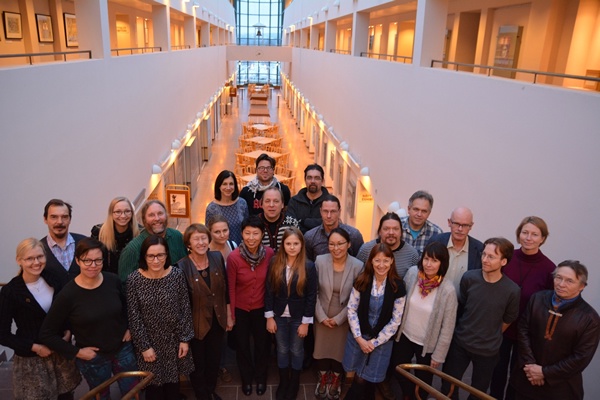
University of Aberdeen
James Hutton Institute, Aberdeen
Arctic Centre, University of Lapland
Norwegian Institute for Cultural Heritage Management, Oslo
Norwegian University of Life Sciences, Ås
The Centre for Arctic Research of the Yamal-Nenets Autonomous, Okrug
A.P. Vinogradov Institute of Geochemistry SB RAS, Irkutsk
Scientific Research Centre of the Arctic, Salekhard
Ájtte Swedish Mountain and Sámi Museum, Jokkmokk
University of Uppsala
Image: The international HUMANOR Project team at the Arctic Centre in Rovaniemi, Finland, in November 2015. (© Arctic Centre, University of Lapland).
Page 1 of 1 Results 1 to 66 of 66
The Benefits of the Cold. Stammler, F., Takakura, H. (eds.). Routledge
Chapters in Books, Reports and Conference Proceedings: Chapters (Peer-Reviewed)
Sentient Entanglements and Ruptures in the Americas: Human-Animal Relations in the Amazon, Andes, and Arctic. Loovers, P., Bolton, M. (eds.). Brill, pp. 135-145, 10 pages
Chapters in Books, Reports and Conference Proceedings: Chapters
Organic Geochemistry, vol. 167, 104407
Contributions to Journals: Articles
Circumboreal Foods
Books and Reports: Other Reports
Circumboreal Foods
Books and Reports: Other Reports
Vol. 2/2, Indrik, Moscow. 776 pages
Books and Reports: Books
Vol. 2/1, Indrik, Moscow. 456 pages
Books and Reports: Books
Contributions to Conferences: Other Contributions
Journal of Archaeological Method and Theory, vol. 28, no. 1, pp. 197–231
Contributions to Journals: Articles
Vol. 1, Indrik, Moscow. 544 pages
Books and Reports: Books
Ecology and Evolution, vol. 10, no. 17, pp. 9060-9072
Contributions to Journals: Articles
Current Anthropology, vol. 61, no. 4
Contributions to Journals: Comments and Debates
Chapters in Books, Reports and Conference Proceedings: Conference Proceedings
Journal of Anthropological Archaeology, vol. 55, 101079
Contributions to Journals: Articles
Contributions to Conferences
Contributions to Conferences: Papers
Contributions to Conferences: Papers
Contributions to Conferences: Papers
Contributions to Conferences: Papers
PloS ONE, vol. 14, no. 2, e0211119
Contributions to Journals: Articles
Contributions to Conferences: Papers
Life Histories of Etnos Theory in Russia and Beyond. Anderson, D., Arzyutov, D., Alymov, S. (eds.). OPEN BOOK PUBL, pp. 203-247, 45 pages
Chapters in Books, Reports and Conference Proceedings: Chapters
Contributions to Conferences: Papers
Arkheologii͡a Arktiki vyp 5.. Fedorova, N. (ed.). tip. zolotoi tirazh, pp. 75-82, 8 pages
Chapters in Books, Reports and Conference Proceedings: Chapters (Peer-Reviewed)
Contributions to Conferences: Papers
Contributions to Conferences: Papers
Contributions to Conferences: Papers
Journal of Island & Coastal Archaeology, vol. 13, no. 4, pp. 582-605
Contributions to Journals: Articles
Norwegian Archaeological Review, vol. 51, no. 1-2, pp. 36-47
Contributions to Journals: Articles
Contributions to Conferences: Papers
Contributions to Conferences: Papers
Contributions to Conferences: Papers
Contributions to Conferences: Papers
Ecology and Evolution, vol. 7, no. 17, pp. 6790-6802
Contributions to Journals: Articles
Contributions to Conferences: Papers
Journal of the Royal Anthropological Institute, vol. 23, no. 2, pp. 398-416
Contributions to Journals: Articles
Contributions to Conferences: Papers
Contributions to Conferences: Papers
Contributions to Conferences: Papers
Ethnoarchaeology of fire
Contributions to Conferences: Posters
Ethnoarchaeology of fire
Contributions to Conferences: Posters
Ethnoarchaeology of fire
Contributions to Conferences: Posters
Current Anthropology, vol. 58, no. 1
Contributions to Journals: Comments and Debates
Proceedings of the Society of Antiquaries of Scotland, vol. 146, pp. 121-152
Contributions to Journals: Articles
Arkheologii͡a Arktiki. Tupakhin, D., Fedorova, N. (eds.). ROS-DOAFK, pp. 5-24, 20 pages
Chapters in Books, Reports and Conference Proceedings: Chapters (Peer-Reviewed)
Summer Farms: Seasonal Exploitation of the Uplands from Prehistory to the Present. Collis, J. R., Nicolis, F., Pearce, M. (eds.). J.R. Collis Publications, pp. 221-235, 15 pages
Chapters in Books, Reports and Conference Proceedings: Chapters (Peer-Reviewed)
Hunter-Gatherer Research, vol. 2, no. 2, pp. 145-148
Contributions to Journals: Comments and Debates
Contributions to Conferences: Papers
Contributions to Conferences: Papers
History and Anthropology, vol. 27, no. 2, pp. 183-209
Contributions to Journals: Articles
Contributions to Conferences: Papers
Contributions to Conferences: Papers
Contributions to Conferences: Papers
Contributions to Conferences: Papers
Contributions to Conferences: Papers
Chapters in Books, Reports and Conference Proceedings: Conference Proceedings
Contributions to Conferences: Papers
Contributions to Conferences: Papers
Arkheologii͡a Arktiki. Fedorova, N. (ed.). Delovaia pressa, pp. 4-16, 13 pages
Chapters in Books, Reports and Conference Proceedings: Chapters (Peer-Reviewed)
Archaeologia Islandica, vol. 10, pp. 9-27
Contributions to Journals: Articles
Sibirica : Interdisciplinary Journal of Siberian Studies, vol. 8, no. 2, pp. 1-42
Contributions to Journals: Articles
Social Anthropology, vol. 17, no. 2, pp. 246-247
Contributions to Journals: Reviews of Books, Films and Articles
Sibirica : Interdisciplinary Journal of Siberian Studies, vol. 8, no. 3, pp. 74-77
Contributions to Journals: Reviews of Books, Films and Articles
Izvestii͡a Laboratorii drevnikh tekhnologiĭ, vol. 1, no. 7, pp. 224-246
Contributions to Journals: Articles
Izvestiia Laboratorii Derevenei Tekhnologi. Irkutskii Gosudarstvennyi Tekhnologicheskii Universitet, pp. 24-38, 15 pages
Chapters in Books, Reports and Conference Proceedings: Chapters (Peer-Reviewed)
Times Higher Education Supplement
Contributions to Journals: Articles